Revived distillery toasts first 10-year-old malt
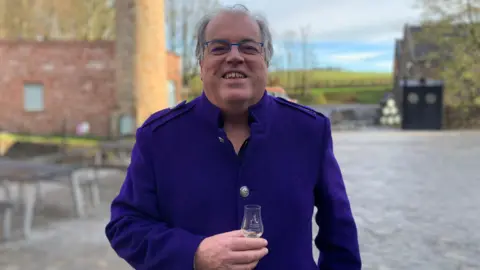 BBC
BBCA Scottish distillery which lay dormant for nearly a century is celebrating its first 10-year-old single malt since it resumed operation.
The Annandale Distillery shut in 1919 but was brought back to life a decade ago after a major restoration project.
Owners Prof David Thomson and Teresa Church bought the buildings in 2007 and they were able to start producing spirits seven years later.
A year-long celebration has now started to mark the first decade back in operation.
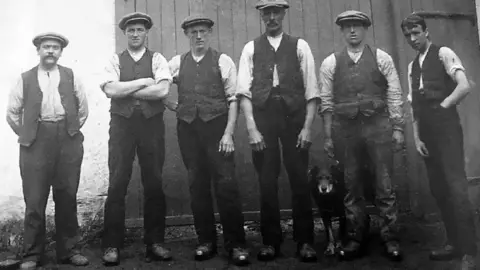 Annandale Distillery
Annandale DistilleryThe story of the distillery looked to have ended when Johnnie Walker ceased production shortly after the end of World War One.
Built in the early 1830s, it fell into disrepair as it lay unused for decades.
By the time the couple bought the property with a view to bringing it back into use, it was on the buildings at risk register.
A multi-million pound renovation began and the site was officially opened by the Princess Royal in 2015.
Now it has reached another important step in its revival with the first whisky being bottled from a cask that was filled a decade ago.

"It's an emotional landmark, really, rather than a maturation landmark," said David.
"Whisky becomes whisky at three years and it progresses through a maturation cycle and 10 years is just a point in that.
"But, from an emotional point of view, it's when it becomes not young whisky - it's considered to be mature whisky at that point - and that's big for a distillery, that's where you want to get to."
Teresa said the journey had been with more than just the whisky.
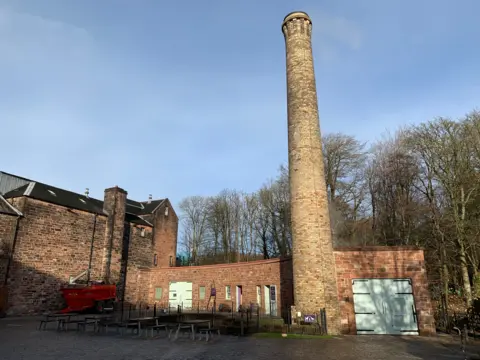
"Actually it's been more than 10 years because the restoration took quite a few years," she said.
From the derelict site, she said, they had to make sure they got every detail right in its redevelopment.
"We're pretty pleased that it is correct," she said.
"Historically it's correct, but with a modern twist."
The story started when Teresa bought her husband a book called Scotch Missed about lost distilleries across the country.
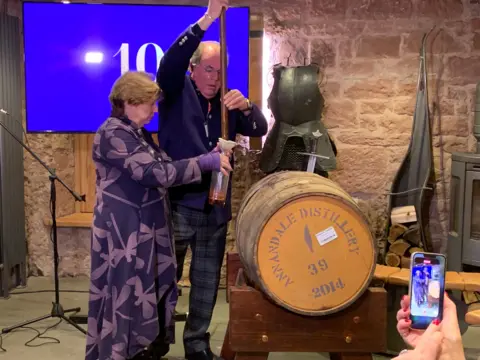
"It's about whisky distilleries - a lot of them were developed after the Excise Act of 1823," said David.
"But come the First World War, quite a lot of them had stopped production and it's a shame in many ways.
"Some were demolished, some were turned into nice housing and some to very gross things that didn't look nice at all.
"We found out about Annandale, we came and saw it, it was a beautiful day and we got all dewy-eyed about it."
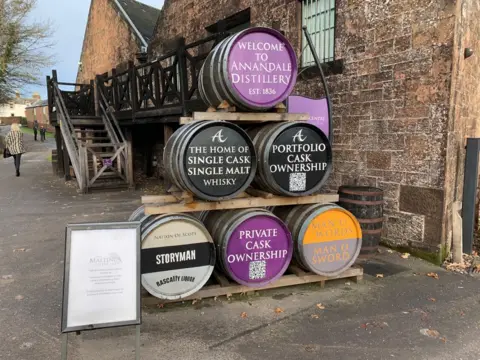
Years of work have delivered a site which, Teresa hopes, is a "cozy, welcoming place".
And what about the product itself?
"The whisky that we're tasting now at 10 years old, I'm delighted with," said David, paying tribute to the help of the late Jim Swan in that regard.
"This is exactly what I wanted to produce, so it's got to be a happy day."
The business now employs about 90 people across what it calls the Annandale "family" - including the Globe Inn in Dumfries and Comlongon Castle at Clarencefield.
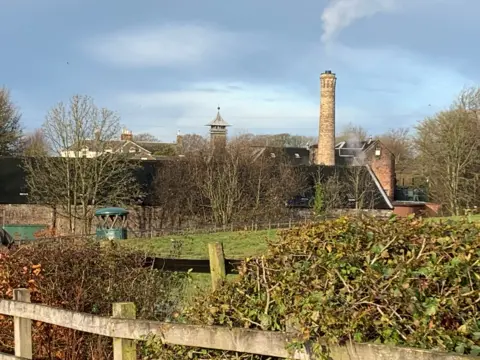
Although the couple admit there were a few "sleepless nights" to get to this stage.
"The period between starting and having something to sell at three years old, I mean, you're just pouring money in all the time," said David.
"You have just got to make sure that you can do that and luckily we were able to do so.
"Then once you get over three years, you can start generating cash."
He said that had meant they had gone from loss-making to breaking even to now making a profit in the last few years.
That is vital for the long-term future of the site.
"Like David said, it has to be profitable, so when we're dead and gone, it still runs as a profitable business" said Teresa.
"Otherwise it would just come to a nasty end."
"We'll never sell it - it would have to be under extreme circumstances," added David.
"We'll find a way of making sure it can continue after we're dead and gone."
